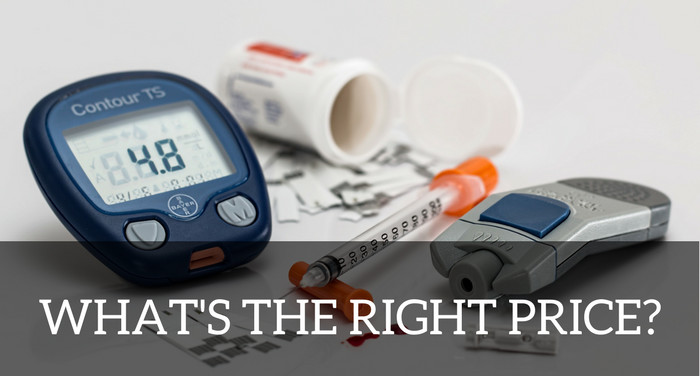
Healthcare Innovations and Pharmaceutical Pricing in 2017 – What Next?
McKinsey & Company reports that the medical device industry has grown up to $380 billion last in 2016 from $260 billion in 2006, primarily due to innovation. We are constantly seeing paramount innovations in healthcare including expansion of medical devices’ clinical applications and effectiveness.
Medical companies are constantly innovating by adapting usage of latest technology tools, such as, for example, wirelessly interconnected devices, software as a medical device, cloud-based artificial intelligence, cost-effective customisation enabled by 3D printing, etc.
At the same time, regulatory compliance has become extra-crucial in addition to the need for quality in the design, manufacture, and distribution of devices. Beyond medical devices, healthcare technology based innovations have started to impact social sectors across borders. One of the recent examples of medical innovation was shared by Satya Nadella (CEO at Microsoft), when he published, “Saving lives one phone call at a time — powered by the cloud”.
Drug Pricing – International Scenario
As reported by WSJ, facing mounting criticism by President Trump about prices, drug companies have put some limits on their increases this year. As it is well known, prescription-drug makers traditionally raise list prices in January. This year, they didn’t raise prices for as many drugs as last year and imposed fewer boosts of 10% or greater, according to an analysis by the investment firm Raymond James & Associates.
New Drug Development – Patent Protection
As drugmakers pushed back against rising criticism over sky-high U.S. prescription drug prices, one pharmaceutical company went public with a pledge. Brent Saunders, CEO of Botox maker Allergan PLC, last September announced a new "social contract" under which the company would limit annual list price increases for its drugs to below 10 percent. Mr. Saunders stated that limiting price hikes forces companies to stay sharp and competitive in innovation and operational excellence. Specifically, pharmaceutical companies stay focused on their pipeline with (patent expirations) in mind, so if their big drug's patent is ending, they need to formulate three to four R&D programs that, if successful, can cover such patent expiration and provide growth.
Drug Patent Search
Traditionally, product and process patents in pharmaceutical sector are obtained with special emphasis on chemical structure patent search technique to determine the patentability of the pharmaceutical drug. Performing a structure based chemical search ensures broadest list of patent results. For example, review the patent search string below. The second drug patent search string provides more than sixteen thousand results for a drug molecule say “X”. Combining the CHEM (chemical structure based search) with other key string parameters can be helpful to perform the drug patent search.
Following example illustrates different parameters to consider while performing drug patent search ( Molecule “Y”) for pharmaceutical medicine:
Pharmaceutical Patent Process
Once the patent search is conducted to determine the novelty of the drug process and product (medicine) before filing for patent, laboratory tests are performed to determine synergistic properties of the medical composition and collect scientific data for the same. This process is highly regulated and different countries follow distinctively comprehensive procedure for the same.
Thereafter, patent claims are written to cover both the process of manufacturing the drug and associated medicine products are claimed in separate patent applications. Subsequently, the scientific data description illustrating the synergistic properties of the medical composition in the patent application is provided to regulatory authorities and corresponding patent applications are filed along with request of examination, in accordance with the local patent laws.
Pharmaceutical Products’ Manufacturing – Indian Perspective
The end goal of research and patent grant is to provide affordable medicines to everyone in India. There is a compulsory licensing clause that has been used to allow manufacturing of patented products at affordable prices in public interest in India. Section 84 is applicable and an application for compulsory license on a patent can be made if reasonable requirements for the public with respect to the patented invention have not been satisfied, or if the patented invention is not available to the public at a reasonably affordable price.
Over the years, the Indian legal system has strictly followed the patent law and working requirements of patents in India. The approval of compulsory licensing for a drug is an exception rather than a rule. If a compulsory license of manufacturing a drug is granted by the Indian patent office, a royalty is paid to the patent holder (on agreeable terms between two parties). In recent years, the drug approval process in India has been expedited to keep up with the public demand and provide affordable healthcare to individuals. The Indian pharmaceutical law is now more clear and defined. To know more about drug patent expirations in 2017: click here.
About the Author
Prity Khastgir manages the Pharmaceutical and Biotechnology Patent Practice. Ms. Khastgir is a Patent attorney and intellectual property lawyer with 15+ years of experience in Biotechnology, Pharmaceuticals, Healthcare, Medical Devices and Chemicals in international markets (US, Europe, Asia Pacific and MENA region).
Ms. Khastgir manages, Direct representation of parties before WIPO and IPO, Coordination and management of Global IP Prosecution and Litigation matters with patent lawyers worldwide, Global IP Strategy and development of Intellectual Assets, Drafting, reviewing and negotiating IP and Technology Agreements (Licensing, Technology Transfer and Collaboration Agreements), Strong patent claim drafting, preparation and prosecution skills for international applications filed before USPTO, EPO, WIPO, UKIPO, MyIPO, IP Australia, IPOS etc.
She has extensive experience in Pharmaceutical Patent Practice for patent searches, invalidation analysis, Freedom-to-Operate (FTO) and product clearance studies, patent infringement reports, claim charts, formulation development, analytical methodologies, regulations and new product development.
Email: khasip@khastgir(dot)com

